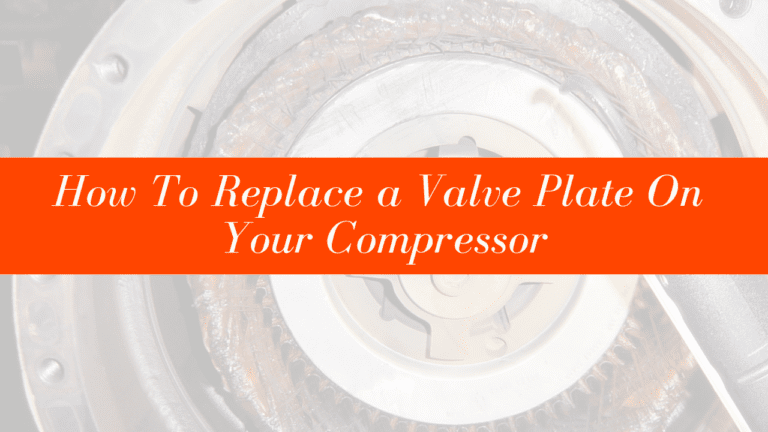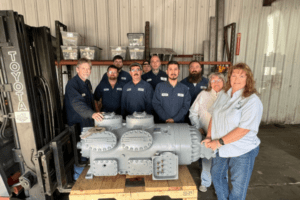
The efficiency of an HVAC/R compressor depends largely on the performance of its suction and discharge valve assemblies. Because valve assemblies act as seals between different pressure zones in a compressor, allowing the refrigerant to flow from low pressure to high pressure regions, a faulty valve assembly can negatively affect the operation of a compressor, increasing energy consumption over time and even leading to premature failure of the compressor.
An important part of a valve assembly is the valve plate. The valve plate works with suction valves to compress low pressure suction gas into high pressure discharge gas. Nowadays, leading compressor manufacturers provide durable valve plates that can withstand many years of operation under various conditions, including high temperatures and extreme low temperature applications. However, valve plates wear over time from normal use or from specific problems, such as excessive heat or pressure, dirt accumulation, damaged gaskets, excessive vibration, and loose hardware.
Replacing valve plates when worn is an important part of keeping your compressor in good working condition. Since replacing valve plates is a relatively simple task, here is a general guide on how to replace the valve plate on different compressor makes and models.
- Start the system and front-seat the suction valve to pump down the compressor.
- Stop the system and front-seat the discharge valve. Under no circumstances should you front-seat the discharge valve while the compressor is operating, as extremely high pressure could build instantly.
- Loosen the compressor head bolts slowly to release the pressure from the discharge side of the compressor head. Then, remove the bolts.
- Carefully remove the compressor head and gently lift the valve plate using a screwdriver. All valve plates have corner tabs that can be used to pry the valve plate up and away from the compressor. NEVER – hit a valve plate on it’s side to loosen it from the compressor. This action will cause the suction valve pins to break.
- Before placing a new gasket, make sure that you remove existing gasket material from surfaces. It’s also very important to select the right gasket for your valve plate and head. The correct gasket must match the cylinder bore and head exactly. Depending on your compressor make and model, replacement valve plate kits may be available. These kits include the entire valve plate assembly and all the gaskets necessary.
- Always replace reeds with new ones. In some valve plate assemblies, reeds are mounted directly on the valve plate. So, the new valve plate comes with the new reeds fastened to it. Other valve plate assemblies have separate reeds. As some replacement valve plate kits include several long and short reeds, make sure that you install the correct reeds. In short, the correct reeds are those that match the landing perfectly.
- The valve plate assembly also includes suction valve pins. Usually, you don’t need to replace these as they are tightly tapped into the compressor deck and can be used with the new valves. IF, a pin comes out with the removal of the valve plate they are in the kit as needed.
- Install the new valve plate, making sure that the holes for guide pins match perfectly.
- Once the valve plate is correctly located, place the right gasket on the compressor head and install the compressor head by tightening the bolts diagonally. Torque head to proper spec.
- Back-seat the discharge valve first and observe your suction side gauge. If you hear or see a large amount of gas pushing thru the compressor, most likely a gasket is installed wrong and must be corrected. If none or a small amount of gas is coming thru the compressor – we can open the suction side service valve. Remember, all new valve plate assemblies require some run in time to seat the new valves. This is command and necessary.
- Start the system and check pressures to ensure the proper functioning of the valve.
Selecting the Right Valve Plate for Your Compressor
Currently, compressor manufacturers provide valve plates made of metals. Metal valve plates are relatively inexpensive and can withstand high pressures, impacts, and elevated temperatures over prolonged periods of time. However, they’re prone to cooper plating and seat build up when a system has been improperly maintained. Although damaged valve plates can be replaced, metal fragments that break off could travel throughout the system and cause serious damage to different parts of the system and compressor.
When you need parts or accessories for your compressor, no detail is small enough to be safely overlooked. To avoid unnecessary delays or extensive compressor damage, look for a reliable and experienced supplier of remanufactured compressors, parts and accessories that can provide the best products and services in a timely manner.












